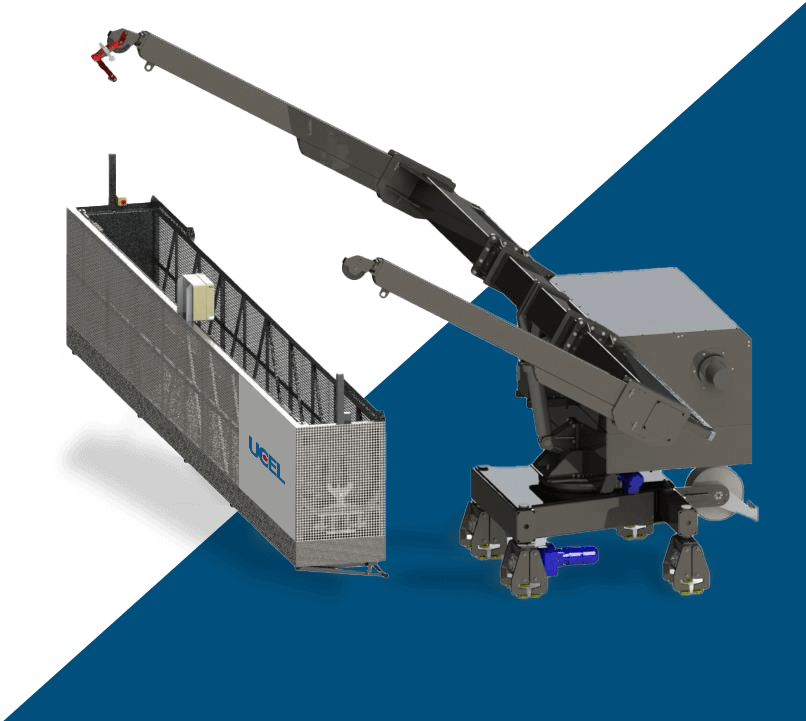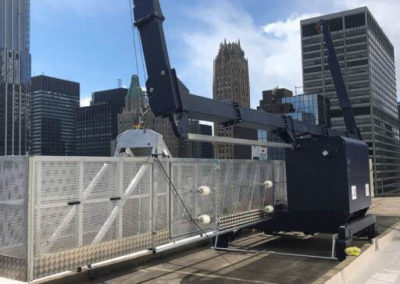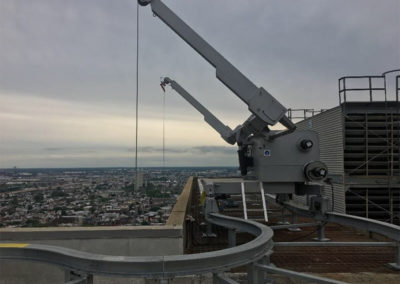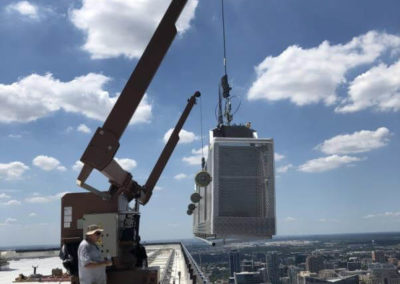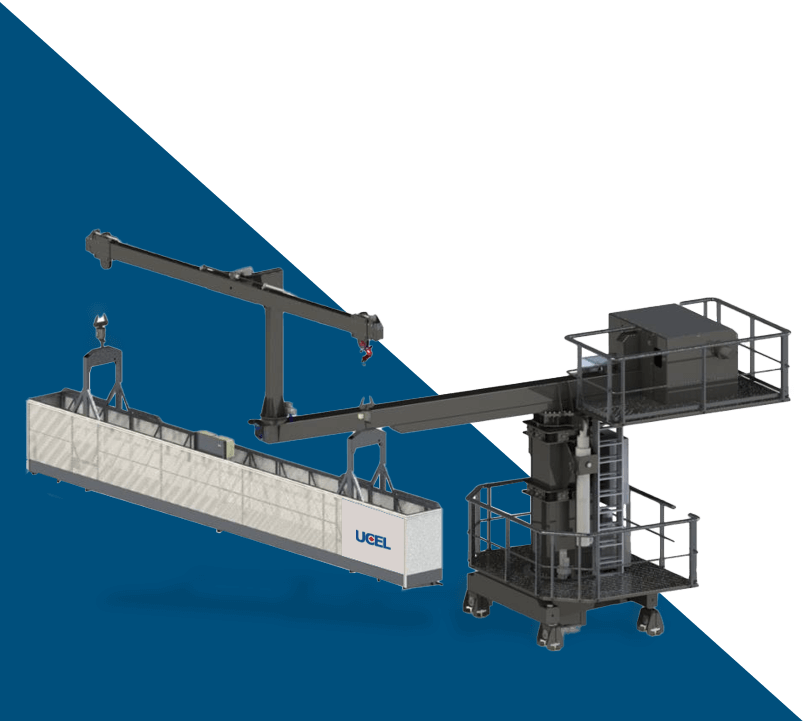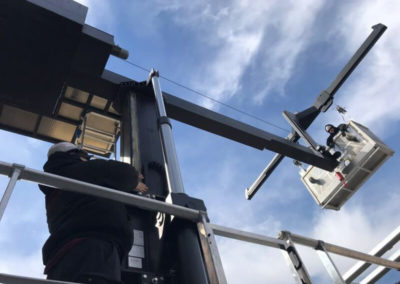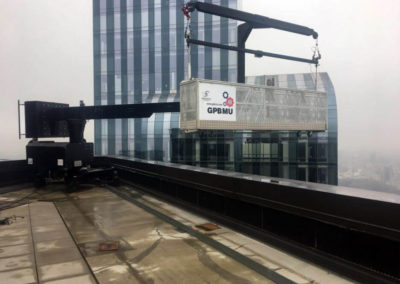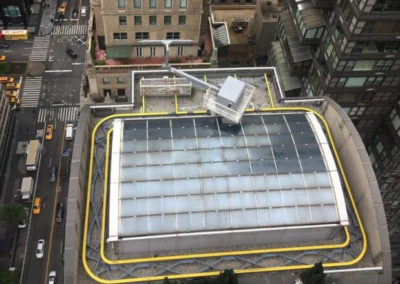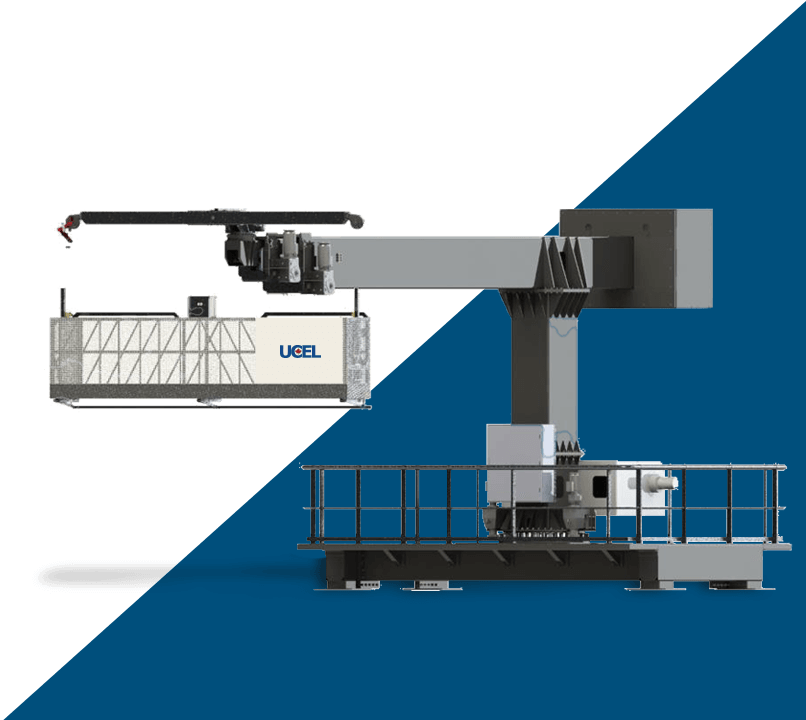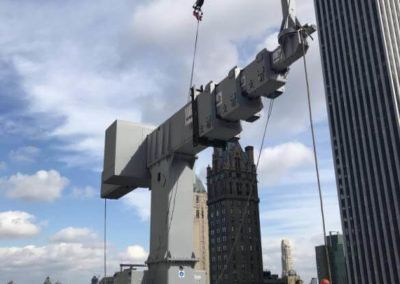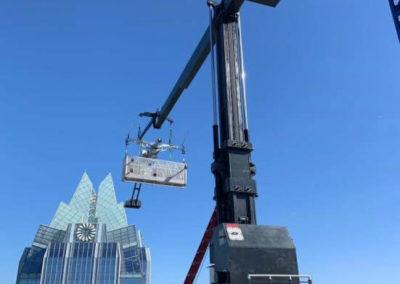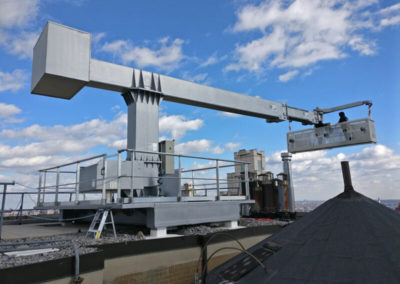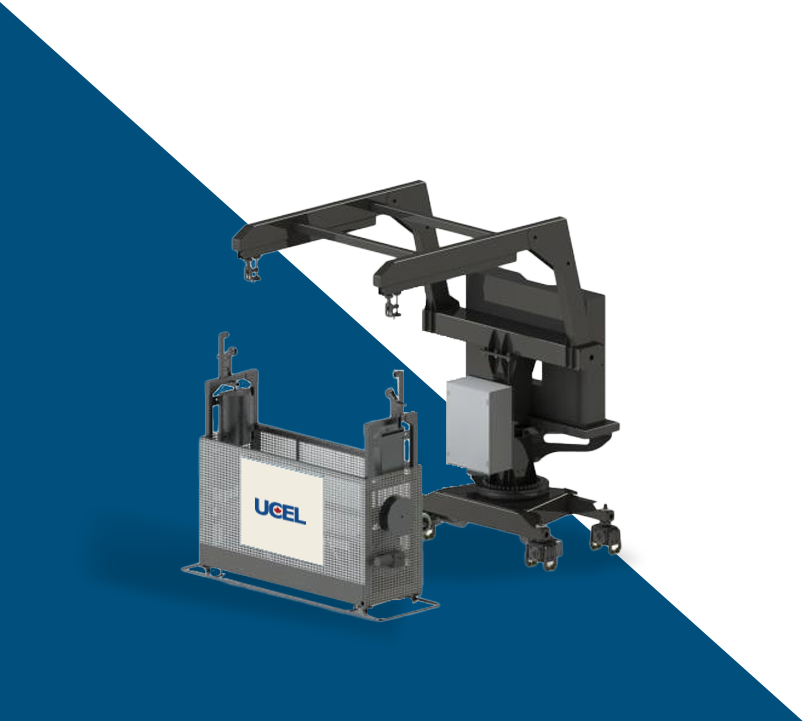Building Maintenance Units (BMU)
Building Maintenance Units (BMU) are devices, typically rooftop, that allow safe access to the facade of a building. Worldwide, architecture is becoming more and more ambitious and artistic, in addition to safety being critical. Current alternatives to BMUs have shorter lifespans, and can be very unsafe. BMUs are necessary to safely and effectively access the complete exterior of buildings. Usually a permanent installation, they can travel along guides which allows them full horizontal and vertical range.
Some of the most common tasks that Building Maintenance Units are considered for are:
- Window Washing
- Facade Cleaning
- Facade Repair (window replacement, masonry, unscheduled maintenance, etc.)
- Facade Inspection
gpn
Usage: For buildings of all heights. Must have roofs that allow the unit to traverse around the parapet.
The GPN is typically considered for buildings with straight facades because of it’s maximum reach of 4-5 meters. It can still be applied to buildings with single-set back facades if a pantograph is added.
Our GPN has two jibs and the versatility to operate with cradles of different sizes, combined with its lower price point make it a popular choice.
Customization:
- Traversing on rails or on concrete paths
- Slewing ring
- Wire rope with electrical core
gpI
Usage: For buildings of all heights with straight or negative facades (when using a pantograph).
The GPI has a single jib, and this long arm makes this BMU (building maintenance unit) ideal for buildings with roofs that do not allow movement next to the parapet.
Customization:
Our wide range of options can adapt your GPI to almost any facade. These include:
- Telescopic jib
- Luffing jib
- Radio control
- Multilayer drum hoist (up to 500 m)
- Traversing on rails or on concrete paths
- Telescopic mast
- Slewing ring
- Turning T-jib
- Wire rope with electrical core
- Others…
gpIT
Usage: For buildings of all heights with straight or negative facades (when using a pantograph). The GPIT is the best BMU to provide access to the different façade protrusions from a single unit.
The GPIT can easily work around multiple obstacles on roofs, just like the GPI.
Customization:
Our wide range of options can adapt your GPIT to almost any facade. These include:
- Luffing jib
- Radio control
- Multilayer drum hoist (up to 500 m)
- Traversing on rails or on concrete paths
- Telescopic mast
- Slewing ring
- Turning T-jib
- Wire rope with electrical core
Trolley – GCM
Usage: A roof car with powered cradles for one(TP01) or two(TP02) people respectively.
Operates similarly to the other models but is meant for buildings no taller than 120m with simple facades.
Some of the main advantages offered by this model are that the powered cradle can be used by other suspended access systems installed in the building (other GCM models, davits, gantries…) and also, that the roof car can traverse easily thanks to its compact size.
Advantages:
- Compact in size so the car can easily traverse
- The powered cradle can be used with other GCM models, davits and gantries
Safety:
Our manufacturing partners for UCEL BMUs require ISO 9001:2008 certification and follow strict guidelines for safety across all components of our machines. Everything is produced in the USA, Europe or Canada; to the highest standards and meets UL, ANSI and CSA code requirements.
ADD-ON SERVICES
EXPERIENCE SINCE 1963
We bring 55+ years of family-operated quality, reliability and safety to every project.
UNCOMPROMISING SAFETY
Our equipment is manufactured in an ISO9001 facility and is certified to meet the highest European, ANSI (US), TUV (EU), and CSA (Canada) requirements.
HOW CAN WE ASSIST YOU?
CONTACT US
Please complete the contact form for a prompt response to your query.
VISIT US
Planning to visit our offices? Here's a map complete with directions.
INDUSTRIES SERVED
ICI
Agriculture
Bridges and Tunnels
Cement
Construction
Power generating plants
Mining
Warehouses
Metals and Steel
Pulp and Paper
Oil & Gas refineries, rigs and storage
Port cranes and shipyards
Chemicals
Aggregates
Nuclear generation
